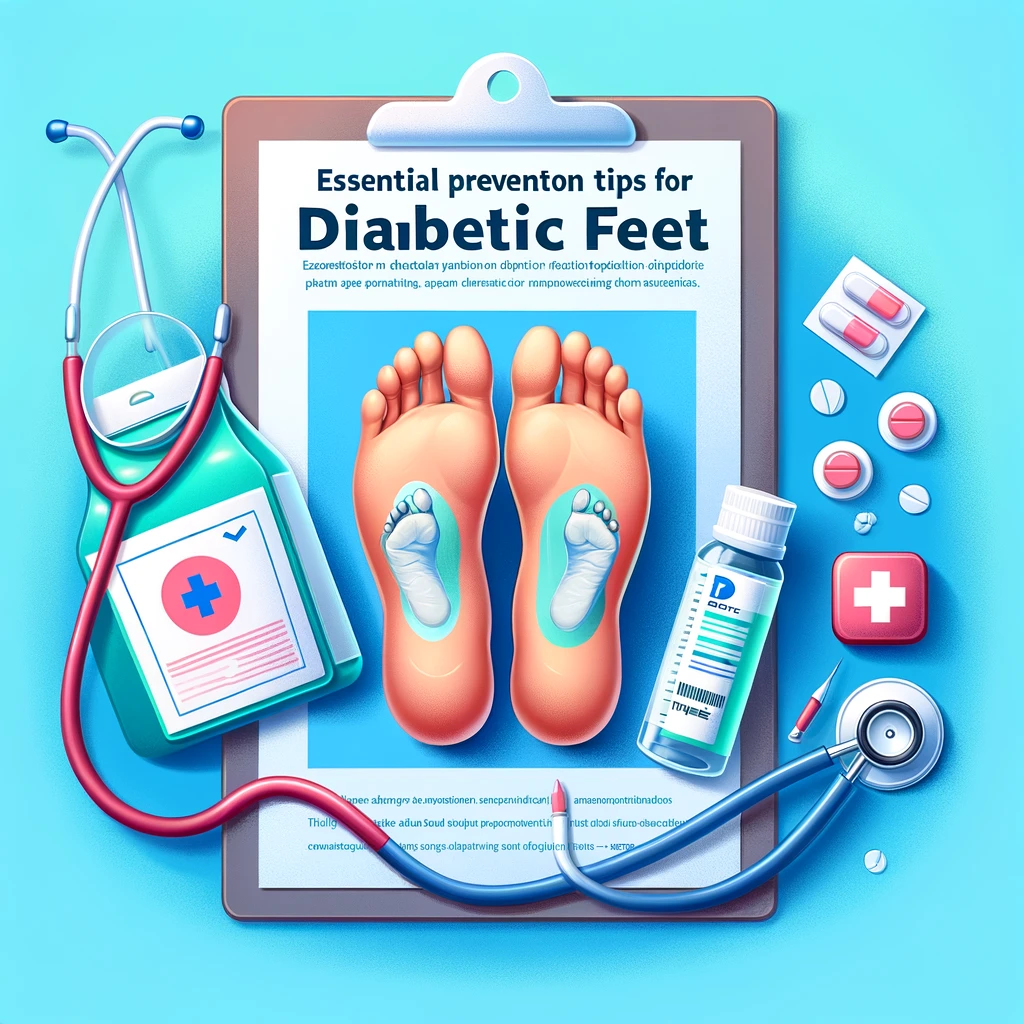
Table of Contents
Foot care is a critical aspect of managing diabetes, but it often gets overlooked. Diabetic foot complications can lead to severe issues, including infections and even amputations. By following essential prevention tips, you can significantly reduce the risk of complications and maintain healthy feet.
Understanding Diabetic Feet Complications
Common Issues Faced by Diabetic Patients
Neuropathy
Neuropathy, or nerve damage, is a common complication for diabetics. It often results in loss of sensation in the feet, making it difficult to notice injuries.
Poor Circulation
Diabetes can lead to poor blood circulation, particularly in the extremities. This impairs the healing process, making minor injuries more prone to infection.
Why Prevention is Crucial
Preventive care can help detect issues early, ensuring they are treated before becoming serious. Regular foot care routines can prevent the majority of complications.
Prevention Tip 1: Regular Feet Inspection
Daily Routine for Foot Checks
Make it a habit to inspect your feet every day. Look for cuts, blisters, redness or swelling. Using a mirror can help you see the bottoms of your feet.
What to Look For
Be on the lookout for any changes in skin color, temperature or texture. Early detection of abnormalities can prevent complications.
Prevention Tip 2: Proper Foot Hygiene
Daily Cleaning Practices
Wash your feet daily with mild soap and lukewarm water. Avoid soaking your feet as it can lead to dryness.
Importance of Moisturizing
Apply moisturizer to your feet every day, but avoid the areas between your toes to prevent fungal infections.
Prevention Tip 3: Choosing the Right Footwear
Features of Good Diabetic Shoes
Look for shoes that provide ample support and cushioning. They should have a wide toe box and be made of breathable material.
Avoiding Tight and Loose Shoes
Shoes that are too tight can cause blisters and ulcers, while loose shoes can lead to instability and falls.
Prevention Tip 4: Keeping Feet Dry
Socks and Shoes for Moisture Control
Wear moisture-wicking socks and shoes with good ventilation. This helps keep your feet dry and reduces the risk of fungal infections.
Managing Sweaty Feet
If you have sweaty feet, consider using foot powders to keep them dry.
Prevention Tip 5: Regular Doctor Visits
Importance of Professional Foot Exams
Regular visits to a podiatrist are essential for maintaining foot health. They can spot issues you might miss.
Frequency of Check-Ups
Schedule foot exams at least once a year, or more often if recommended by your doctor.
Prevention Tip 6: Managing Blood Sugar Levels
Impact on Foot Health
Keeping your blood sugar levels in check can prevent damage to blood vessels and nerves in your feet.
Tips for Keeping Blood Sugar in Check
Follow your doctor’s advice on diet, exercise, and medication to manage your blood sugar effectively.
Prevention Tip 7: Avoiding Barefoot Walking
Risks of Going Barefoot
Walking barefoot increases the risk of cuts and infections. Always wear shoes, even indoors.
Safe Alternatives
Opt for soft, comfortable slippers at home to protect your feet.
Prevention Tip 8: Using Orthotic Supports
Benefits of Orthotics
Orthotic supports can provide additional cushioning and support, reducing the risk of injuries.
Custom vs. Over-the-Counter Options
Consult with your doctor to determine if custom orthotics or over-the-counter options are best for you.
Prevention Tip 9: Staying Active Safely
Safe Exercises for Diabetic Patients
Engage in low-impact exercises such as walking, swimming or cycling to maintain foot health without overexertion.
Benefits of Physical Activity on Foot Health
Regular exercise improves circulation and helps maintain a healthy weight, reducing the strain on your feet.
Prevention Tip 10: Immediate Action on Foot Injuries
First Aid for Minor Injuries
Clean and bandage any cuts or blisters immediately. Keep an eye on them to ensure they heal properly.
When to See a Doctor
Seek medical attention if you notice signs of infection, such as redness, swelling or pus.
Conclusion
Taking proactive steps to care for your feet can prevent serious complications. By following these essential tips, you can protect your feet and enjoy a healthier life.
FAQs
What are the first signs of diabetic foot problems?
The first signs include numbness, tingling, pain, and changes in skin color or temperature.
How can I improve circulation in my feet?
Regular exercise, proper footwear, and avoiding smoking can help improve circulation.
Are there specific socks recommended for diabetic patients?
Yes, diabetic socks are designed to reduce pressure, wick moisture, and improve circulation.
Can diet impact foot health for diabetics?
Absolutely. A balanced diet helps manage blood sugar levels, which is crucial for foot health.
What should I do if I notice a sore on my foot?
Clean it, apply a bandage, and monitor it closely. If it doesn’t heal or shows signs of infection, see a doctor immediately.



